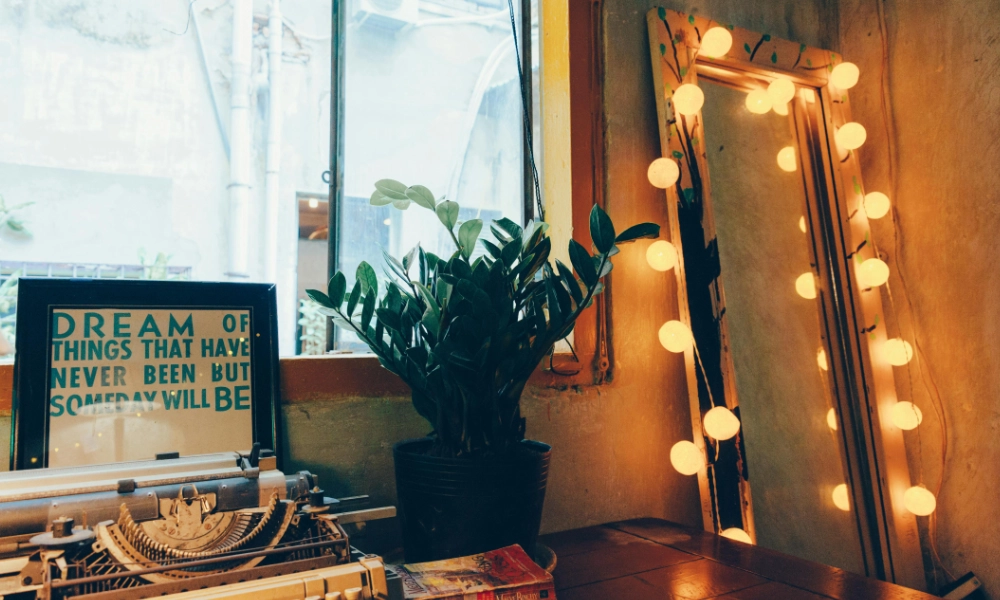Train the connection between feeling, gaze and movement
Slow motion exercise for the art of magic

"The truth of movement lies in slowness."
Inspiriert vom Körpertheater nach Lecoq
Aim of the exercise
This exercise sharpens emotional expressiveness by slowing down movements considerably. In conscious slow motion, subtle emotions come to the fore – and with them what makes a performance really come alive: inner presence.
Especially in the art of magic, where precision and timing often take center stage, emotional depth can be lost. This method brings feeling back to the center of magic – and turns the trick into a touching moment.
What you need
A simple trick (e.g. the appearance/disappearance of a coin, color change of cards)
A mirror or smartphone for video recording
A quiet room with space to move around
Optional: quiet, instrumental background music
Step by step - how the exercise works
1. technology without emotion
Perform the trick without facial expressions, without drama. Purely technical. You observe the pure process – like a robot or technician.
2. deceleration
Repeat the trick in extreme slow motion. Every movement is stretched. Watch out for:
Transitions between the positions
Tension in the hands
Breathing and gaze control
Tip: Imagine you are moving through honey.
Remark
The metaphor “Imagine you are moving through honey” comes from body and movement training (e.g. from Lecoq, Viewpoints or Grotowski work) and is a pictorial guide to performing movements extremely consciously and slowly.
Why honey?
Honey is viscous and thick – it creates resistance.
If you imagine that your arms, hands or your whole body are moving through honey, you automatically slow down every movement – because you feel this imaginary resistance.
At the same time, it creates a certain physical tension – you stay present and don’t just “hang” limply in the movement.
Effect:
The result is a controlled, conscious movement in which you can feel every transition. This is precisely what is important in slow motion work. Otherwise, many movements seem “empty” or mechanical. The honey image adds resistance and depth – you can feel the path, not just the destination.
3. invite emotion
Now choose an emotion, e.g:
Amazement – As if you were surprised yourself
Joy – light, playful, almost childlike
Awe – Calm, mystical, deeply connected
Sadness – A touch of loss, melancholy
Let it flow into your posture, your breath and your facial expressions. The movement changes automatically – subtly, but noticeably.
4. mirror or camera
Perform the trick again – this time with a mirror or camera. Observe:
How does your gaze work?
What do your hands say?
Is the emotion acted or felt?
The "error lab"
Deliberately try out variations that don’t work:
Exaggerating emotion → Is it theatrical or real?
Trick without emotion → How empty does it seem?
Wrong emotion → What happens if there is a contradiction?
This will sharpen your sense of authentic expression.
In practice
This exercise is particularly suitable for tricks with atmosphere – for example:
The floating of an object
The disappearance of a coin
Opening a mysterious box
Tip: prolong the moment of the event. Hold your gaze, breathe consciously, allow tension to build. The “magic” takes place between the moments.
Observe yourself:
Eyes: Is your gaze alive or does it flicker?
Face: Does it show emotion or just “show”?
Hands: Is the emotion reflected in the finger position?
Breathing: Does it support movement?
Extension: Partner work
Variant 1: Live feedback
One person performs the trick, the other observes. Short feedback afterwards:
“I felt…”
“I wasn’t convinced with…”
“Your hands seemed alive/lifeless with the emotion…”
Variant 2: Mirror work
One player shows the emotion in the trick – the other “reflects” it back, without words. Then switch.
This not only trains your expression, but also your perception – essential for stage & magic.
Reflection questions
At what moment was I really present?
Did I play the emotion – or did I feel it?
How does my trick change through my inner self?
Which feelings suit me – and my style?
What does it take to create touch instead of just impact?
Concluding thoughts
Slowing down forces us to feel where we are internally while we are performing magic or playing. Suddenly it becomes visible whether a movement is sustained – or empty. Whether the gaze is only leading – or feeling. In this slowness, the body becomes a resonance chamber in which not just technique but real presence vibrates.
If you dare to expand the moment, to fill it with meaning and emotion, a completely different kind of magic is created. The focus is not on the effect, but on the relationship: between you and the object, between you and the audience. The trick becomes a shared experience, not just a demonstration.
The silent flame is not a firework. It doesn’t flicker loudly, it burns deeply. And sometimes this quiet glow is enough to touch people – without any grand gestures. Because those who play with their innermost being are not playing for applause, but for connection.
Further exercises
Sorry, we couldn't find any posts. Please try a different search.
